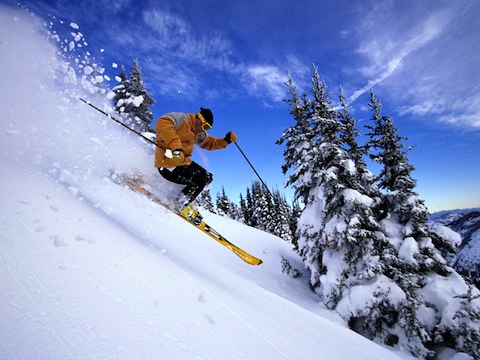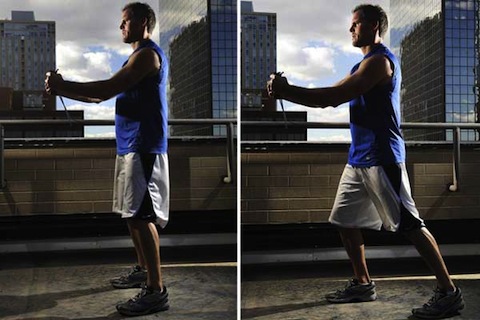
Many use the wintertime as an excuse to retire from their workout regimen and enjoy the season's guilty pleasures—like sweatpants, hoodies and delicious holiday food. These guilty pleasures may be fabulous but they often leave many sluggish. This is especially true when it comes to hitting the slopes. It's important to maintain good health year round but it's even better during the cooler climates to avoid injury from a day skiing or snowboarding. AZFoothills.com spoke with Direct of Athletic Performance at Zone Athletic Performance in Scottsdale, Garrett Shinoskie, to learn how to prepare oneself for winter sports.

AFM: Are injuries on the slopes more common in individuals who don't work out as much as others?
GS: Regardless of the type of athletic activity, incidence of injury is always higher in deconditioned participants. Even if you only participate at the recreational level, skiing places a tremendous demand on the joints and muscles and should not be taken lightly. I highly recommend incorporating a strength and conditioning program that focuses on lower body and core strengthening exercises.
AFM: Are more injuries found in skiers or snowboarders?
GS: I haven’t read any definitive statistics that would lead me to believe that one discipline is more dangerous than the other.
AFM: What are some daily exercises people can do to better prepare themselves for the snow season?
GS: Here are three daily exercises that can have an immediate impact on how you feel and perform on the slopes. 1.) Prone Plank, benefit core strength and spinal stability. Perform three sets of 30-60 second holds. 2.) Multi Directional Lunges, benefit leg strength and hip/knee stability. Perform three sets of 10-15 repetitions each leg (linear and lateral) 3.) Supine Hip Bridge, benefit hip strength and low back stability. Perform three sets of 10-15 repetitions holding each rep at the top for 2 seconds.
AFM: Is there a beginning, intermediate and expert workout routine for skiers/snowboarders of all levels?
GS: As in any sport with any increase in the level of competition, there is always advancement in the training protocols during the offseason. Be honest with yourself and start with an exercise program that is challenging but something that you can maintain consistency throughout the year.
AFM: What are the most common injuries?
GS: The common injuries involved in skiing are lower leg fractures, knee ligament strains and tears, and impact injuries to the head.
AFM: How long should an individual do the exercise routines before they go on the slopes?
GS: Well, in an ideal world everyone would maintain fit and healthy lifestyle year round, but since this typically isn’t the case, I recommend at least hitting the gym six to eight weeks prior to the slopes.
Learn more at: www.zoneap.com.